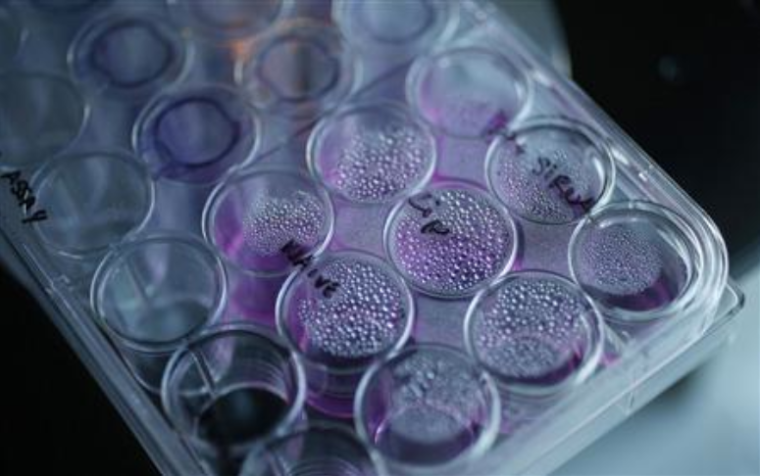Cancer cure news update: New treatment from California's City of Hope made tumors disappear

An ongoing clinical trial at a cancer center in California, known as City of Hope, made a breakthrough when tumors vanished from a man who was receiving treatment for brain cancer.
Richard Grady, 50, was diagnosed with glioblastoma, a brain tumor that had spread cancer in different parts of his body through his spine. Grady enrolled himself for the clinical trial at the City of Hope in Duarte, California, where an immunotherapy treatment called CAR-T therapy was being developed.
The treatment was mainly used for blood cancer patients, but Associated Press confirmed that the CAR-T therapy was able to get rid of Grady's tumors. Before Grady, the CAR-T therapy's effect on tumors was unknown until it was administered in a different manner.
The CAR-T therapy was administered to Grady by taking T cells from his blood, which were genetically modified so that they can develop into cancer-destroying cells.
But prior to the CAR-T therapy, Grady had already gone through surgeries to manually remove some of his tumors. After having surgeries, he received weekly infusions of his genetically modified T cells for six weeks through a tube that went into his brain. When Grady's tumors continued to grow, that's when the doctors decided to alter the treatment.
They added another tube into Grady's brain, where it was directly connected to the cavity that produces spinal fluid.
"The idea was to have the flow of the spinal fluid carry the T cells to different locations," City of Hope's neurosurgery chief Dr. Behnam Badie explained.
It took Grady a total of 10 treatments before all his tumors vanished.
Unfortunately, seven months later, new tumors have developed in his brain, and Grady had to revert back to radiation treatment. But Badie said, "For him to live more than a year and a half" from a condition where the only guarantee is having weeks of survival is still amazing.
Meanwhile, another type of therapy by a research team from the University of Coimbra, Portugal has had similar effects of completely diminishing tumors.
According to Pravda, the treatment is called photodynamic therapy where a molecule called redaporphine is activated by infrared light, and when it comes into contact with oxygen, it creates other molecules that destroy tissues surrounding it. The treatment is administered directly to the tumor, leaving the healthy tissues undamaged.
Only the first clinical trial on human subjects has been done, and it resulted positively in cancer treatment for the head and the neck areas. The development team and clinical trial team at the University of Coimbra will begin administering the photodynamic therapy on a larger scale, and they hope that it will be safely available for cancer patients in 2022.
 Christians don't have to affirm transgenderism, but they can’t express that view at work: tribunal
Christians don't have to affirm transgenderism, but they can’t express that view at work: tribunal Archaeology discovery: Medieval Christian prayer beads found on Holy Island
Archaeology discovery: Medieval Christian prayer beads found on Holy Island Presbyterian Church in America votes to leave National Association of Evangelicals
Presbyterian Church in America votes to leave National Association of Evangelicals Over 50 killed in 'vile and satanic' attack at Nigerian church on Pentecost Sunday
Over 50 killed in 'vile and satanic' attack at Nigerian church on Pentecost Sunday Ukrainian Orthodox Church severs ties with Moscow over Patriarch Kirill's support for Putin's war
Ukrainian Orthodox Church severs ties with Moscow over Patriarch Kirill's support for Putin's war Islamic State kills 20 Nigerian Christians as revenge for US airstrike
Islamic State kills 20 Nigerian Christians as revenge for US airstrike Man who served 33 years in prison for murder leads inmates to Christ
Man who served 33 years in prison for murder leads inmates to Christ


 Nigerian student beaten to death, body burned over ‘blasphemous’ WhatsApp message
Nigerian student beaten to death, body burned over ‘blasphemous’ WhatsApp message 'A new low': World reacts after Hong Kong arrests 90-year-old Cardinal Joseph Zen
'A new low': World reacts after Hong Kong arrests 90-year-old Cardinal Joseph Zen Iran sentences Christian man to 10 years in prison for hosting house church worship gathering
Iran sentences Christian man to 10 years in prison for hosting house church worship gathering French Guyana: Pastor shot dead, church set on fire after meeting delegation of Evangelicals
French Guyana: Pastor shot dead, church set on fire after meeting delegation of Evangelicals ‘Talking Jesus’ report finds only 6% of UK adults identify as practicing Christians
‘Talking Jesus’ report finds only 6% of UK adults identify as practicing Christians Mission Eurasia ministry center blown up in Ukraine, hundreds of Bibles destroyed: 'God will provide'
Mission Eurasia ministry center blown up in Ukraine, hundreds of Bibles destroyed: 'God will provide' Church holds service for first time after ISIS desecrated it 8 years ago
Church holds service for first time after ISIS desecrated it 8 years ago Burger King apologizes for 'offensive campaign' using Jesus' words at the Last Supper
Burger King apologizes for 'offensive campaign' using Jesus' words at the Last Supper Uganda: Muslims abduct teacher, burn him inside mosque for praying in Christ’s name
Uganda: Muslims abduct teacher, burn him inside mosque for praying in Christ’s name